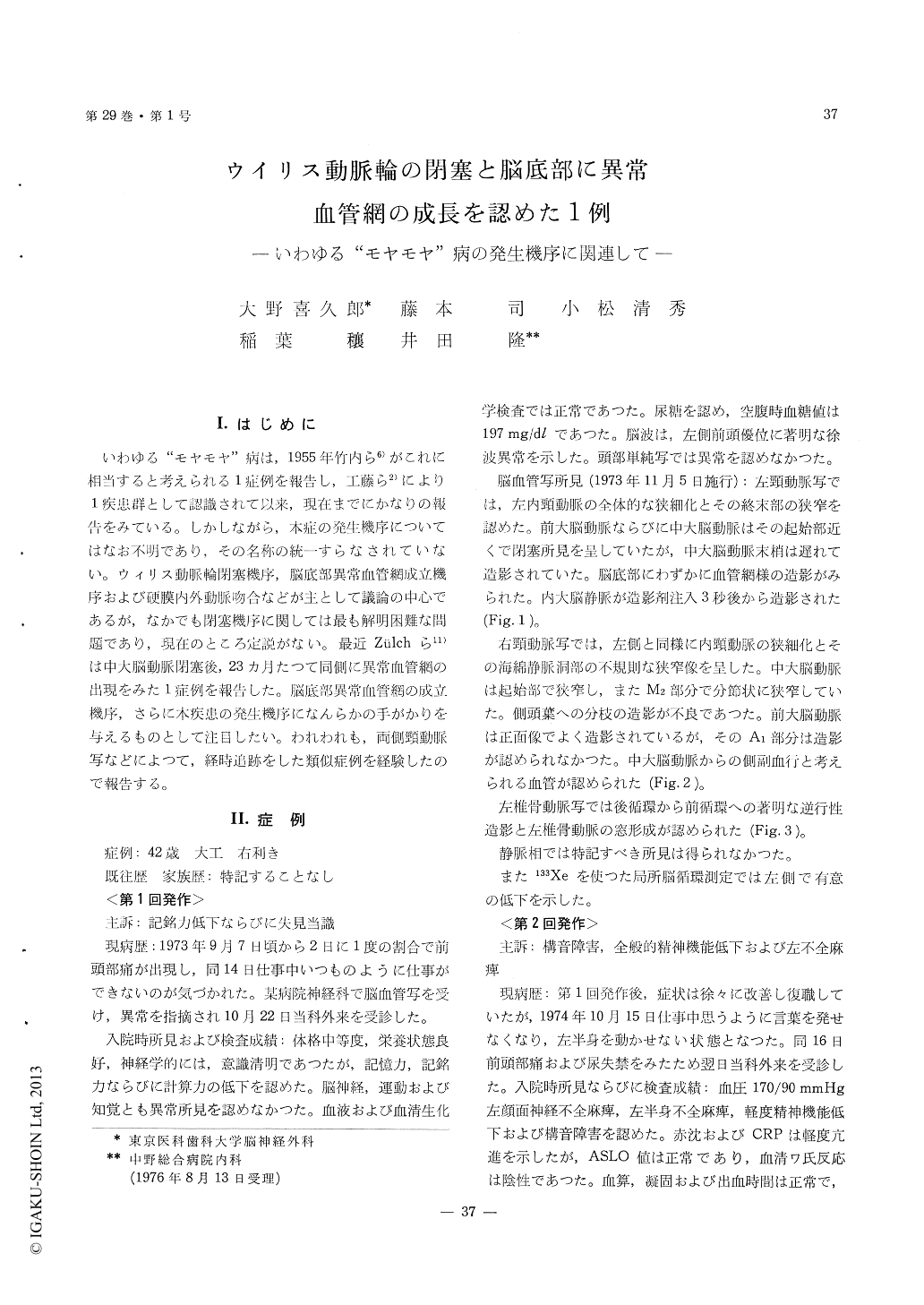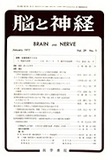Japanese
English
- 有料閲覧
- Abstract 文献概要
- 1ページ目 Look Inside
I.はじめに
いわゆる"モヤモヤ"病は,1955年竹内ら6)がこれに相当すると考えられる1症例を報告し,工藤ら2)により1疾患群として認識されて以来,現在までにかなりの報告をみている。しかしながら,本症の発生機序についてはなお不明であり,その名称の統一すらなされていない。ウィリス動脈輪閉塞機序,脳底部異常血管網成立機序および硬膜内外動脈吻合などが主として議論の中心であるが,なかでも閉塞機序に関しては最も解明困難な問題であり,現在のところ定説がない。最近Zülchら11)は中大脳動脈閉塞後,23力刀たつて同側に異常血管網の出現をみた1症例を報告した。脳底部異常血管網の成立機序,さらに本疾患の発生機序になんらかの手がかりを与えるものとして注目したい。われわれも,両側頸動脈写などによつて,経時追跡をした類似症例を経験したので報告する。
The pathogenesis of the so-called "Moyamoya" disease which is an angiographical syndrome is still unknown. A 42-year-old case was presented and discussed in relation to the pathogenesis of the syndrome.
A right handed carpenter was referred to our clinic with a chief complaint of memory dis-turbance. Consciousness was clear. Memory and calculation was slightly disturbed. Electroencephalo-graphy revealed marked theta activity and 1. 5-3 Hz delta waves more pronounced on the left side. Left carotid angiograms showed diffuse narrowing and marked stenosis at the terminal portion of the internal carotid artery and the occlusion at Al portion of the anterior cerebral artery and at M1 portion of the middle cerebral artery. Slight vascular networks were shown at the base of the brain. The early filling of the internal cerebral vein was seen. Right carotid angiograms showed diffuse narrowing of the internal carotid artery and a stenosis at the origin and segmental narrow-ing at M2 portion of the middle cerebral artery. Left vertebral angiograms showed marked retro-grade filling from the posterior circulation to the anterior. The fenestration of the vertebral artery was found.
Afterwards he was observed as an outpatient in our clinic and his mental disturbance gradually improved. About one year after the first attack he developed disturbance of articulation, left facial paresis and left hemiparesis. Right carotid angio-grams showed the occlusion of the internal carotid artery at its terminal portion. Left carotid angio-grams demonstrated the growth of abnormal vascular networks at the base of the brain. Three months after the last attack the clinical signs and symptoms almost disappeared.
In this case the development of the signs and symptoms and angiographical changes may be possibly based on the occlusion of internal carotid arterial system. However it is not clear why the occlusion occurred. Abnormal vascular networks incrased one year after the middle and anterior cerebral arteries had occluded. The angiographical change shows an interesting fact of the develop-ment of cerebral collateral circulation, though it can not explain all causal geneses of the so-called "Moyamoya" disease. The occlusion of the circle of Willis was likely a cause of the development of abnormal vascular networks and it is conjectural that its development was due to the growth of perforating arteries.

Copyright © 1977, Igaku-Shoin Ltd. All rights reserved.


